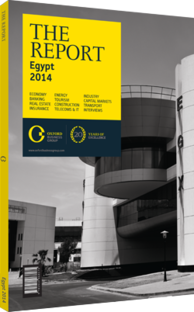Encouraging firms to list will be central to the market’s new strategy
Economic uncertainties typically work against new listing activity, as the diminishment of Egypt’s initial public offering (IPO) stream over recent years clearly demonstrates. The global economic crisis had already had a negative effect on markets throughout the region, prompting global investors to retrench and domestic investors to sit on capital – and Egypt was no exception. Between 2008 and the close of 2010 only four IPOs were staged in the country, the last of which was the offering of real estate developer Amer Group. The onset of the revolution in early 2011 put a stop to the already modest stream of IPO activity, and for three years the IPO arena was entirely dormant. However, a more favourable climate in the wake of a successful presidential election has seen a renewal of interest in IPOs during 2014. With investor confidence apparently returning and the Egyptian Exchange (EGX) placing new listings at the centre of its development strategy, it seems that the IPO hiatus of recent years is at an end.
New Arrival
The most recent entry as of writing was the Arabian Cement Company, which is the third-largest cement producer in the country. Founded in 1997 by a group of Egyptian shareholders, its facility has a capacity of 5m tonnes per year, which it directs to the local market. Its position within the building materials industry establishes it as a promising investment prospect: Egypt’s infrastructural needs are great, and the government has already revealed an ambitious development plan.
The success of the company’s IPO in May 2014, therefore, came as little surprise to market observers. After a private placing of shares was 11.3 times oversubscribed, Arabian Cement set a price of LE9 ($1.28) per share for its IPO. The public offering raised $110m on the sale of 85.2m shares, with officials from one of the two banks advising on the deal, CI Capital, reporting that the listing was 18.5 times oversubscribed. Speaking to the media after the offer’s conclusion, Mohamed Omran, chairman of the EGX, said the oversubscription reflected traders’ appetite for any new stocks in the market, and that the nation’s bourse was “ready to accept more offers”.
Making The Case
The interest that the offer received bodes well for the EGX’s ambition to attract new listings to the main board. The “Egyptian Exchange Proposed Strategy 2013-2017”, the document by which the future development of the exchange is being guided, recognises the role played by the bourse in the economic life of the country, and calls for the reinforcement of the EGX’s activities in this regard.
One of its key proposals is the encouragement of IPOs in order to deepen the market, and to this end in May 2014 it hosted the EGX IPO Summit 2014, the first conference of its kind in the country. The agenda included sessions on a range of topics germane to IPO advancement, including an examination of efforts to streamline IPO procedures and facilitate fund raising for Egyptian companies, as well as the regulatory route that companies should follow.
In The Future
The new listing rules on IPO activity should help bring a greater degree of clarity while the provision to allow companies incorporated through an IPO to list have been welcomed as regulatory improvements – and both are indicative of the EGX’s efforts to adopt best practice. Both EFG-Hermes, Egypt’s largest publicly traded investment bank, and CI Capital Holding, a unit of Commercial International Bank, have both stated publicly that they expect to help two companies go to the market in 2014 or early 2015. While no details regarding these offerings have been released, the Egyptian government has also revealed its intention to offer to float two companies connected to its high-speed rail project on the bourse. The Ministry of Petroleum is also preparing for the IPOs of two new petrochemical firms, having discussed the feasibility of the move with the EGX and public banks. While Egypt’s macro-economic environment may continue to face some uncertainty, the capital markets are seeing significant room for upside growth.
You have reached the limit of premium articles you can view for free.
Choose from the options below to purchase print or digital editions of our Reports. You can also purchase a website subscription giving you unlimited access to all of our Reports online for 12 months.
If you have already purchased this Report or have a website subscription, please login to continue.

